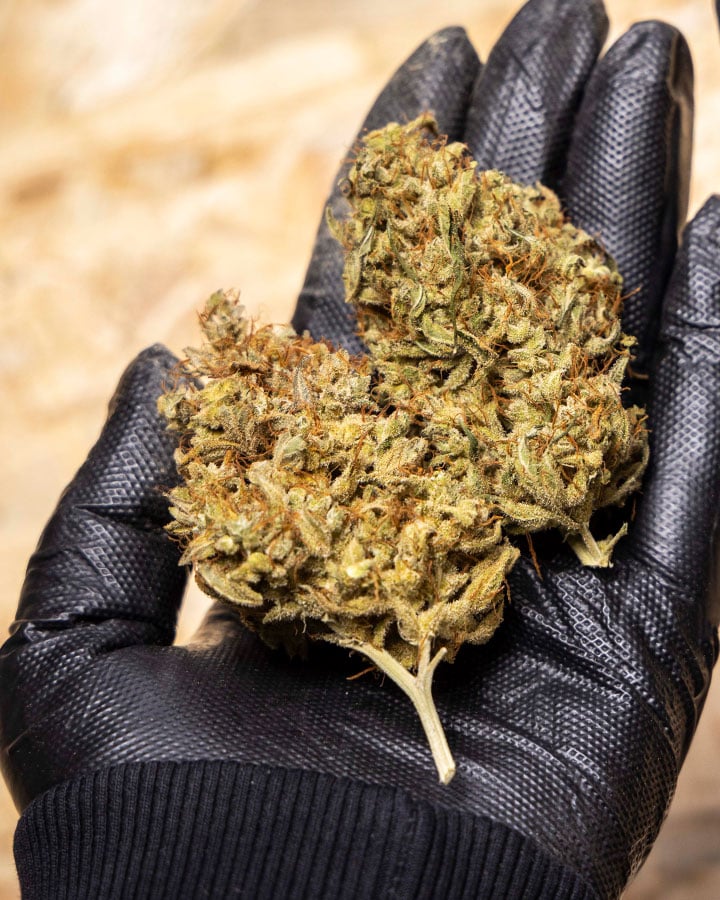Weeds in Khmelnytskyi: Addressing the Growing Environmental Challenge

Khmelnytskyi, a city located in western Ukraine, is known for its historical significance, beautiful landscapes, and growing cultural scene. The city, nestled along the banks of the Southern Bug River, serves as a vital regional center with a blend of agricultural activity and urban development. However, like many other cities, Khmelnytskyi is facing a growing issue that often goes unnoticed—the proliferation of weeds. While weeds might seem like a minor concern, their increasing presence in Khmelnytskyi is becoming an environmental, economic, and public health challenge that needs to be addressed.
Understanding how and why weeds are spreading in Khmelnytskyi, as well as their environmental impact, is essential for finding effective solutions to manage their growth. With careful planning and proactive management, Khmelnytskyi can protect its green spaces, safeguard public health, and ensure the continued success of its agricultural industry.
The Weed Problem
Weeds are plants that grow where they are not wanted, often outcompeting other vegetation for resources such as water, sunlight, and nutrients. In Khmelnytskyi, several factors are contributing to the rapid spread of weeds, particularly in urban areas and surrounding agricultural fields. The city’s soil, which is fertile and rich in nutrients, is perfect for plant growth. While this is advantageous for crops, it also creates ideal conditions for weeds to thrive.
Common weeds in Khmelnytskyi include dandelions, thistles, and ragweed (Ambrosia artemisiifolia). Ragweed, in particular, has become a growing concern in recent years due to its ability to spread quickly and its potential to trigger allergic reactions in many people. These weeds often find their way into urban spaces like parks, roadsides, and residential gardens, where they grow unchecked and become a nuisance for residents and city officials.
The rapid spread of weeds in Khmelnytskyi can be attributed to multiple factors, including soil disturbance caused by construction and urban development, agricultural practices, and the movement of goods and materials that may carry seeds. Weeds are particularly adept at thriving in disturbed environments, which makes them common in areas where land is being cleared or where human activity is frequent.
Environmental Impact of Weeds
The spread of weeds in Khmelnytskyi has a significant impact on both urban and rural environments. In natural spaces like parks and green areas, weeds displace native plants that are crucial to the ecosystem. Native plants provide food and shelter to local wildlife, maintain soil quality, and contribute to overall biodiversity.
In agricultural areas surrounding Khmelnytskyi, the spread of weeds presents an even greater challenge. Weeds such as bindweed (Convolvulus arvensis) and thistles compete with crops for essential resources like water, sunlight, and nutrients. This competition can lead to reduced crop yields and lower-quality produce. Farmers are forced to spend more time and money managing weeds, which reduces their overall efficiency and increases production costs.
Weeds also affect soil health. Over time, this can lead to soil degradation, making it more difficult to grow crops or maintain healthy landscapes.
Health Impacts of Weeds in Khmelnytskyi
Ragweed pollen is a major allergen that triggers seasonal allergic rhinitis (hay fever) and respiratory issues, including asthma.
Ragweed typically blooms in late summer and early fall, releasing vast amounts of pollen into the air. For residents of Khmelnytskyi, this pollen can cause a range of symptoms, from sneezing and nasal congestion to more serious issues like shortness of breath and asthma attacks.
Additionally, overgrown weeds can create other health risks. Tall, dense vegetation can trap moisture, which provides an ideal breeding ground for mosquitoes. Mosquitoes are vectors for diseases such as West Nile virus, malaria, and other illnesses.
Managing Weeds in Khmelnytskyi
Addressing the weed problem in Khmelnytskyi requires a comprehensive and multifaceted approach. Local authorities have taken some steps to manage the issue, but more needs to be done to tackle the growing challenge effectively.
One of the most important strategies for managing weeds in urban areas is regular maintenance and monitoring. This includes routine mowing of public parks, sidewalks, and green spaces to prevent weeds from taking root and spreading.
However, the use of chemical herbicides is not without controversy. While they may offer quick results, herbicides can have harmful environmental effects, including soil and water contamination. As a result, many cities, including Khmelnytskyi, are exploring more sustainable methods of weed control. Organic mulches also improve soil quality over time, making them a more eco-friendly and sustainable alternative.
Another important approach is to educate local residents about the role they can play in controlling weeds.
In agricultural areas, farmers can adopt more sustainable farming practices to manage weeds.
Looking to the Future
The growing presence of weeds in Khmelnytskyi is a complex issue, but with the right strategies, the city can effectively address the challenge.
By prioritizing sustainable solutions and fostering community involvement, Khmelnytskyi can build a healthier, more resilient city for future generations.
You’re the best when it comes to marijuana products , always taking care of me. Definitely recommending you to my friends. Thanks for the quick delivery .Really happy with the product .As usual, it’s top-notch. Keep it up you. you can contact them on email Scenthub43@gmail.com and also there Telegram : https://t.me/Scenthub43
wow Thanks for the referral they have great service and got the best weed around. and the delivery is so smooth.

Thanks for always being reliable! I can always count on you for good product.
You’re the go-to in the area for a reason. Always a smooth experience